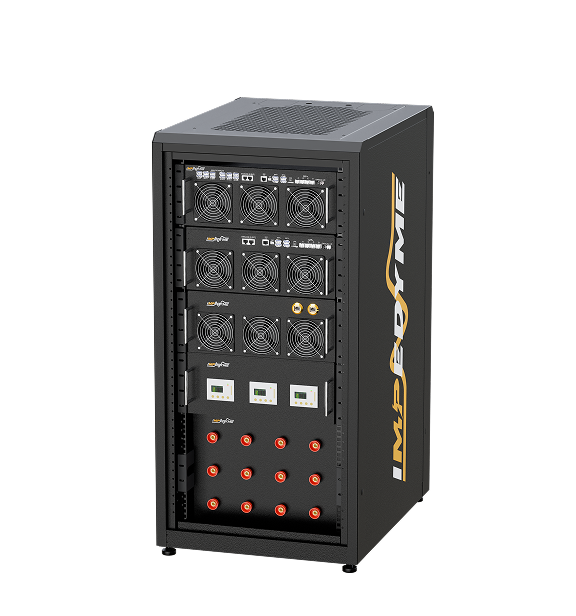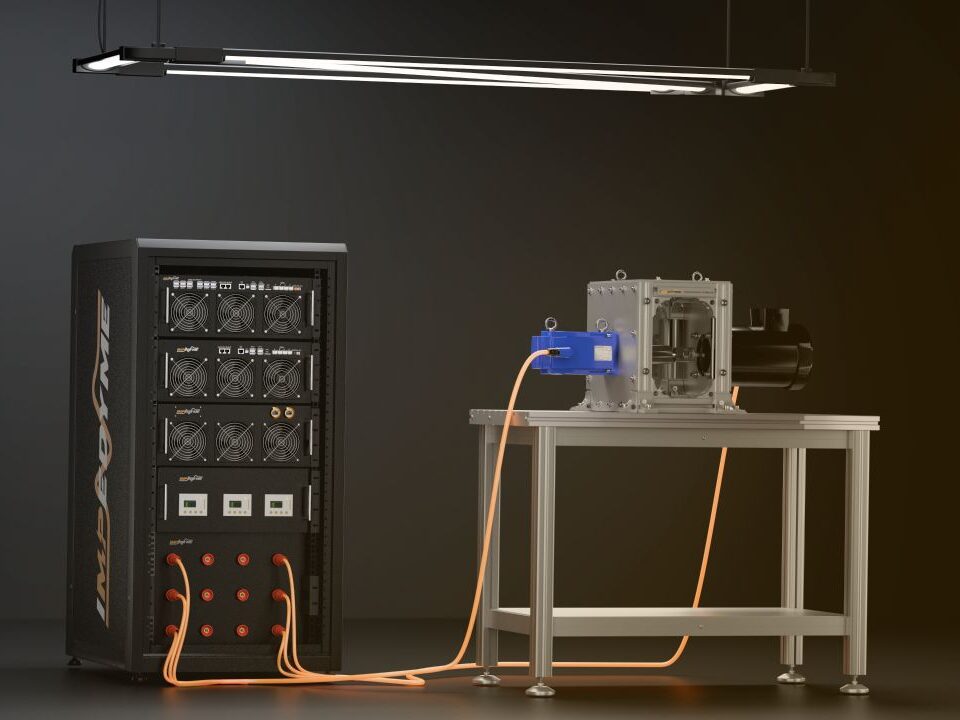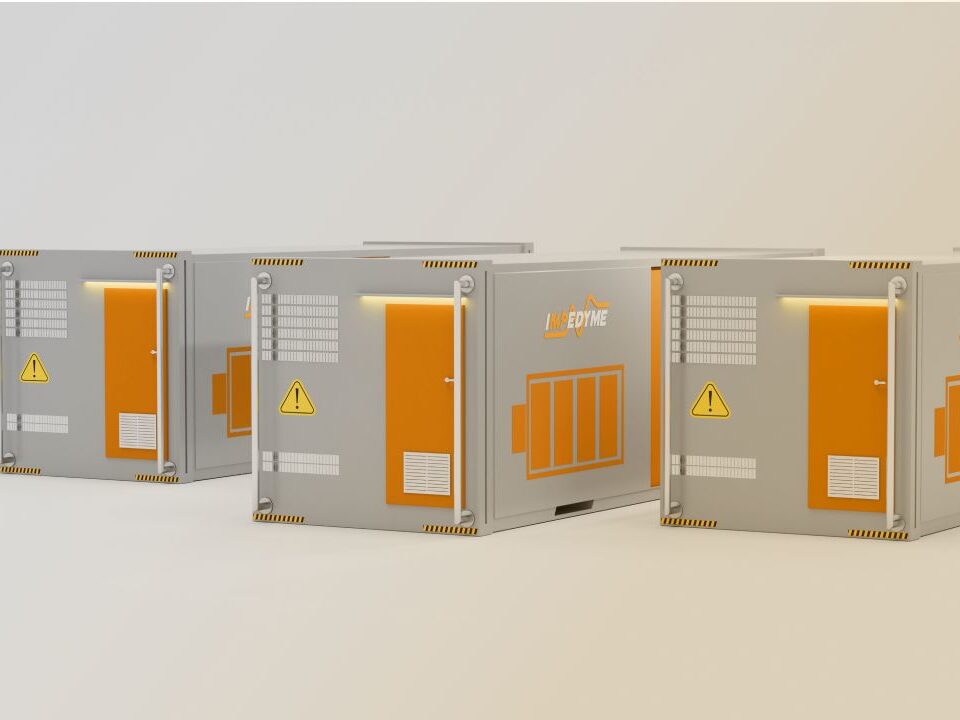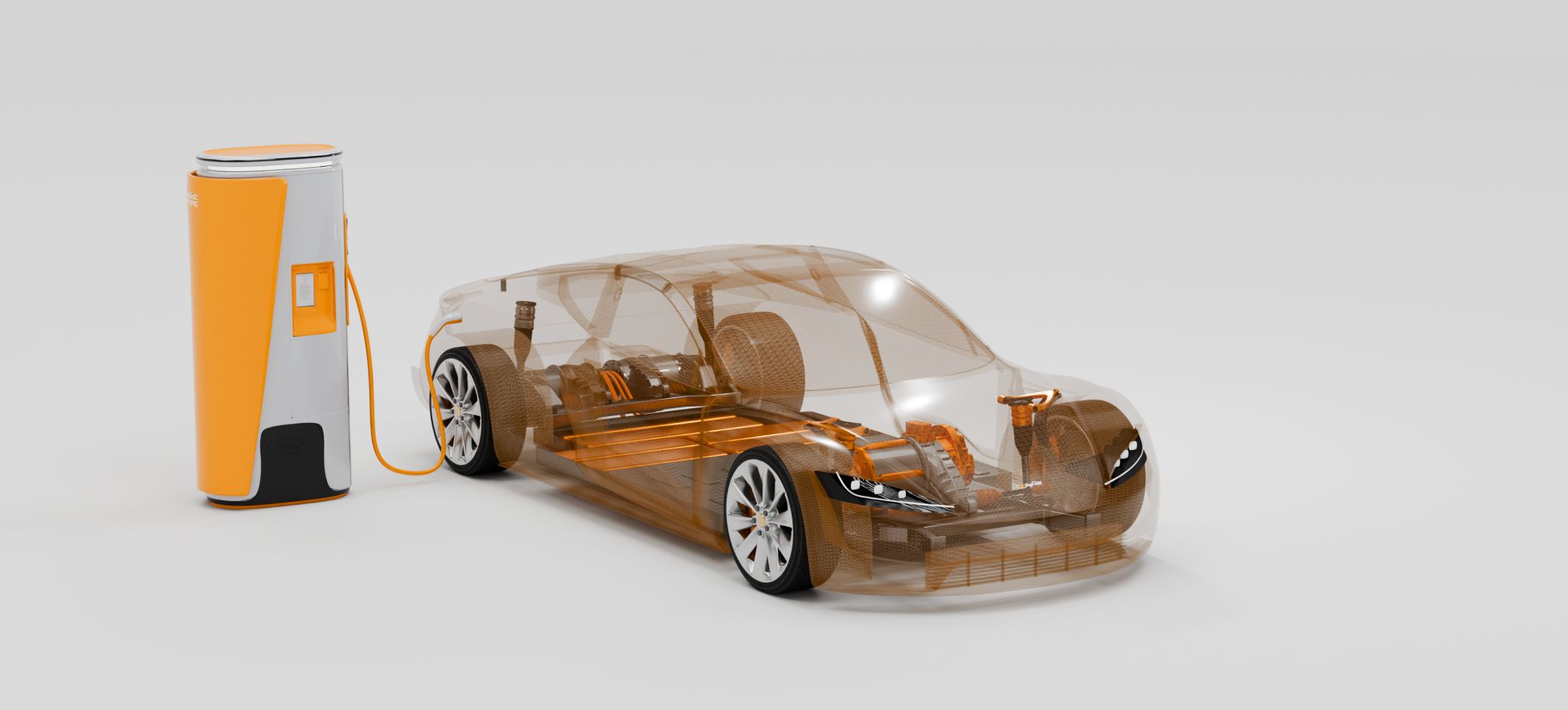
-
 Induction Motor
Induction Motor
-
 Automotive Electrical System Simulation
Automotive Electrical System Simulation
-
 DC/DC Bidirectional Converter
DC/DC Bidirectional Converter
-
 PWM Control for Brushless DC
PWM Control for Brushless DC
-
 BLDC Motor Control and Drive Simulation
BLDC Motor Control and Drive Simulation
-
 Electric Vehicle Fast Charger Simulation
Electric Vehicle Fast Charger Simulation
-
 DFIG Wind Turbine Simulation
DFIG Wind Turbine Simulation
-
 Dual Active Bridge
Dual Active Bridge
-
 EV Dynamometer Test Environment Simulation
EV Dynamometer Test Environment Simulation
-
 Electric Vehicle Simulation
Electric Vehicle Simulation
-
 Three-Phase Grid-Connected Inverter Using Direct-Q…
Three-Phase Grid-Connected Inverter Using Direct-Q…
-
 Three-Phase Grid-Connected Solar Photovoltaic
Three-Phase Grid-Connected Solar Photovoltaic
-
 Grid-Connected Rectifier
Grid-Connected Rectifier
-
 Grid-Tied Inverter System
Grid-Tied Inverter System
-
 Torque Control in a Hybrid Excitation Synchronous …
Torque Control in a Hybrid Excitation Synchronous …
-
 Wye-Delta Starting Circuit
Wye-Delta Starting Circuit
-
 IPMSM-Based Axle-Drive
IPMSM-Based Axle-Drive
-
 Simplified Parallel Hybrid Electric Vehicle
Simplified Parallel Hybrid Electric Vehicle
-
 Simplified Series Hybrid Electric Vehicle
Simplified Series Hybrid Electric Vehicle
-
 Series-Parallel Hybrid Electric Vehicle
Series-Parallel Hybrid Electric Vehicle
-
 Three-Phase Matrix Converter Simulation
Three-Phase Matrix Converter Simulation
-
 Venturini Modulation for Three-Phase Matrix Conver…
Venturini Modulation for Three-Phase Matrix Conver…
-
 Microgrid Frequency Regulation Using Vehicle-to-Gr…
Microgrid Frequency Regulation Using Vehicle-to-Gr…
-
 Three-Phase Modular Multilevel Converter
Three-Phase Modular Multilevel Converter
-
 Field-Oriented Control
Field-Oriented Control
-
 Interior Permanent Magnet Synchronous Generator
Interior Permanent Magnet Synchronous Generator
-
 Permanent Magnet Synchronous Machine
Permanent Magnet Synchronous Machine
-
 PMSM Rotor Angular Velocity
PMSM Rotor Angular Velocity
-
 PMSM-Based Electrical Traction Drive
PMSM-Based Electrical Traction Drive
-
 Maximum Power Point Tracking
Maximum Power Point Tracking
-
 Six-Phase Permanent Magnet Synchronous Machine
Six-Phase Permanent Magnet Synchronous Machine
-
 Synchronous Machine-Based Electrical Drive Simulat…
Synchronous Machine-Based Electrical Drive Simulat…
-
 Single-Stage Solar Inverter
Single-Stage Solar Inverter
-
 Three-Phase Cycloconverter Simulation
Three-Phase Cycloconverter Simulation
-
 Totem-Pole PFC Simulation
Totem-Pole PFC Simulation
-
 Twelve-Pulse Thyristor Rectifier
Twelve-Pulse Thyristor Rectifier
-
 Two-Wheeler On-Board Charger
Two-Wheeler On-Board Charger
-
 Vienna Rectifier Simulation
Vienna Rectifier Simulation
-
 High-Voltage Direct Current
High-Voltage Direct Current
-
 Wireless Power Transfer
Wireless Power Transfer
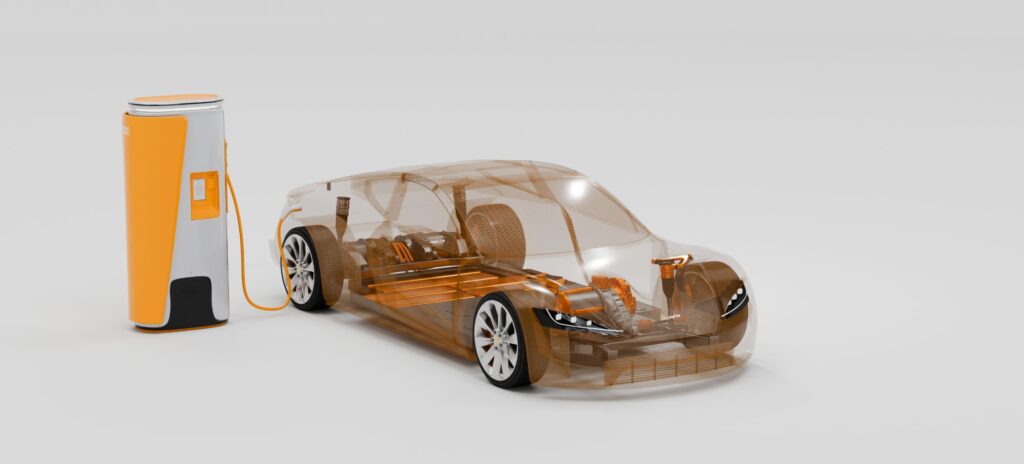
Comprehensive Documentation for On-Board Charger Simulation for Two-Wheeler Vehicle
Table of Contents
- 1 Comprehensive Documentation for On-Board Charger Simulation for Two-Wheeler Vehicle
- 1.1 Introduction
- 1.2 System Overview
- 1.2.1 What is an On-Board Charger (OBC)?
- 1.2.2 Purpose of the Simulation
- 1.3 Key Features
- 1.3.1 High-Efficiency Power Conversion
- 1.3.2 Intelligent Battery Charging Algorithms
- 1.3.3 Power Factor Correction (PFC) Implementation
- 1.4 Simulation Objectives
- 1.5 Technical Description
- 1.5.1 System Configuration
- 1.5.2 Control Methodology
- 1.6 Advantages of On-Board Chargers for Two-Wheelers
- 1.7 Applications
- 1.8 Simulation Benefits
- 1.9 Summary
- 1.10 Future Enhancements
- 1.11
- 1.11.1 Induction Motor
- 1.11.2 Automotive Electrical System Simulation
- 1.11.3 DC/DC Bidirectional Converter
- 1.11.4 PWM Control for Brushless DC
Introduction
The On-Board Charger (OBC) Simulation for Two-Wheeler Vehicles is a comprehensive model designed to analyze the efficiency, power conversion, and control strategies of on-board charging systems in electric two-wheelers. As electric mobility gains momentum, the need for compact, lightweight, and high efficiency charging solutions becomes critical. This simulation provides valuable insights into charger performance, battery charging profiles, and power factor correction techniques, ensuring optimal energy management.

System Overview
What is an On-Board Charger (OBC)?
An on-board charger (OBC) is an integrated power electronic system in electric vehicles (EVs) that converts AC grid power into regulated DC power to charge the vehicle’s battery. It includes power factor correction (PFC), rectification, and DC-DC conversion stages to ensure efficient and safe battery charging.
Purpose of the Simulation
The simulation aims to:
- Analyze AC-DC conversion and power factor correction efficiency.
- Validate charging algorithms for different battery chemistries.
- Optimize power management and thermal performance.
Key Features
High-Efficiency Power Conversion
The OBC achieves high efficiency through advanced power conversion topologies, reducing energy losses during charging. ➡️ HIL/PHIL Benefit: Real-time evaluation of efficiency under different grid conditions ensures optimal charger operation.
Intelligent Battery Charging Algorithms
The simulation supports Constant Current (CC), Constant Voltage (CV), and adaptive charging techniques for lithium-ion and other battery chemistry. ➡️ HIL/PHIL Benefit: Enables real-time testing of various charging profiles and adaptive algorithms.
Power Factor Correction (PFC) Implementation
Compact Design:Helps design lightweight and compact OBCs suitable for two-wheelers.
Reliability and Safety: Ensures safe and reliable operation under various conditions.
Cost Savings: Reduces development time and cost by minimizing physical testing.
Active PFC circuits ensure compliance with grid regulations by maintaining a near-unity power factor. ➡️ HIL/PHIL Benefit: Testing under different grid disturbances ensures compliance with international power quality standards.
Simulation Objectives
This simulation helps evaluate:
- Charger efficiency and thermal performance.
- Dynamic response to varying input voltage and battery SOC (State of Charge).
- Grid compliance, including harmonic distortion and power factor correction. ➡️ HIL/PHIL Benefit: Real-time validation allows engineers to fine-tune charger control strategies before hardware deployment.
Technical Description
System Configuration
- Input: Single-phase or three-phase AC grid (110V/230V/400V).
- Power Conversion Stages: Rectifier, PFC, and isolated DC-DC converter.
- Output: Regulated DC power to charge a two-wheeler battery pack (typically 48V-72V Li-ion batteries).
- Control System: Digital control with DSP/FPGA-based algorithms for optimized charging.
Control Methodology
- Power Factor Correction (PFC): Ensures high power quality and reduces grid-side harmonics.
- DC-DC Regulation: Provides stable charging voltage and current.
- Battery Management System (BMS) Integration: Monitors battery health and adjusts charging profiles dynamically. ➡️ HIL/PHIL Benefit: Real-time emulation of grid and battery conditions ensures robust control validation.
Advantages of On-Board Chargers for Two-Wheelers
- Compact and Lightweight: Designed for integration into electric scooters and motorcycles.
- Grid-Friendly Operation: Ensures compliance with grid regulations.
- Fast and Adaptive Charging: Optimized for rapid charging while ensuring battery longevity. ➡️ HIL/PHIL Benefit: Full-cycle testing from simulation to real-world validation using Impedyme’s platforms.
Applications
- Electric Two-Wheelers: Motorcycles and scooters with integrated charging.
- Urban Mobility Solutions: Battery swapping and fast-charging infrastructure.
- Last-Mile Delivery Vehicles: Optimized charging for delivery fleets. ➡️ HIL/PHIL Benefit: Accelerates development of application-specific charging solutions.
- Power Quality and Efficiency: Harmonic Analysis: Simulations help analyze and mitigate harmonic distortion caused by the OBC, ensuring compliance with power quality standards like IEEE 519.
Power Factor Correction (PFC): Simulations are used to design and test active PFC circuits in the OBC to improve efficiency and reduce reactive power.
- Grid Compatibility and Safety: Grid Interaction Studies: Simulations help study the interaction between the OBC and the grid, ensuring stable operation under varying grid conditions (e.g., voltage fluctuations, frequency variations).
Isolation and Safety: Simulations are used to test the OBC’s isolation and safety features, such as ground fault detection and protection.
- Cost Reduction and Time-to-Market: Prototype Testing: Simulations reduce the need for physical prototypes, saving time and cost during the development phase.
Fault Scenario Analysis: Simulations help identify and address potential issues early in the design process, reducing the risk of costly recalls or failures.
Simulation Benefits
With this simulation, users can:
- Explore charger efficiency under real-world scenarios.
- Validate PFC and charging control strategies.
- Optimize thermal performance and EMI/EMC compliance. ➡️ HIL/PHIL Benefit: Simulation insights can be directly implemented in hardware prototypes for validation.
Summary
The On-Board Charger Simulation for Two-Wheeler Vehicles enables detailed analysis of AC-DC conversion, battery charging, and power quality improvement. By integrating Impedyme’s HIL and PHIL solutions, the development workflow is enhanced:
| Development Stage | Impedyme’s Contribution |
|---|---|
| Control Design | RCP using HIL for rapid algorithm validation |
| Control Hardware Testing | CIL with real-time OBC models |
| Power Stage Verification | PHIL with real grid and battery interaction |
| Final Validation | Full-system PHIL under realistic charging conditions |
Future Enhancements
- Integration of AI-driven charging algorithms for battery longevity.
- Fault-tolerant design for enhanced safety and reliability.
- Wireless charging compatibility for two-wheeler applications.
- Smart-grid interaction and vehicle-to-grid (V2G) support.
The On-Board Charger Simulation for Two-Wheeler Vehicles, combined with Impedyme’s HIL/PHIL platforms, provides a comprehensive solution for developing efficient, reliable, and intelligent charging systems. This streamlined approach ensures faster development cycles, improved grid compatibility, and enhanced battery life, making it a crucial tool for the future of electric mobility.
